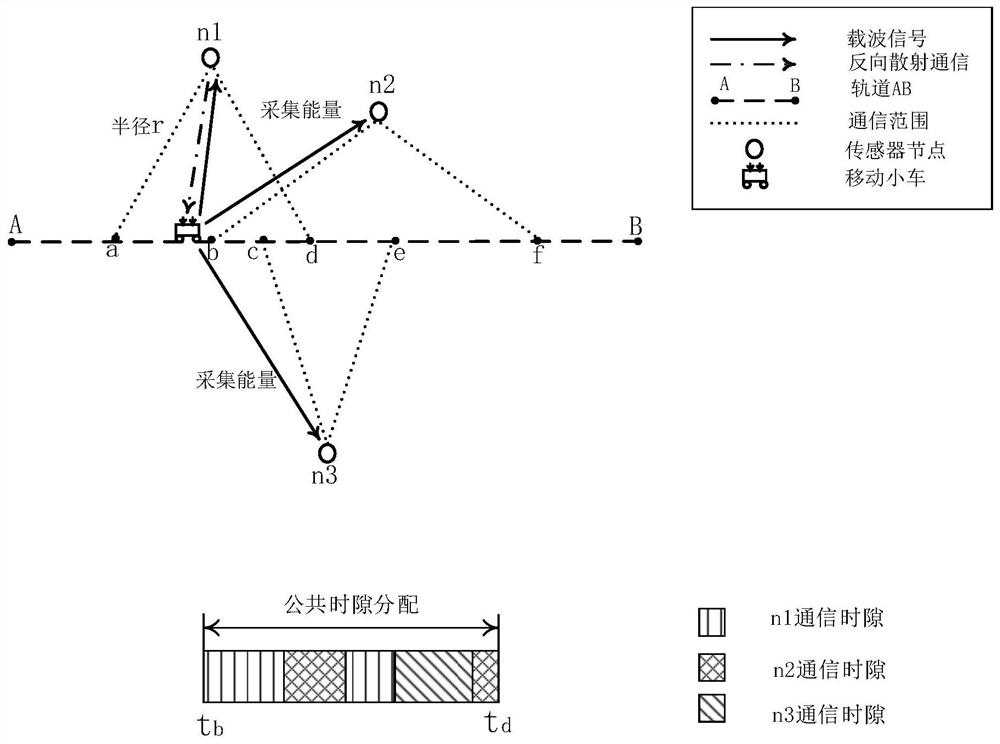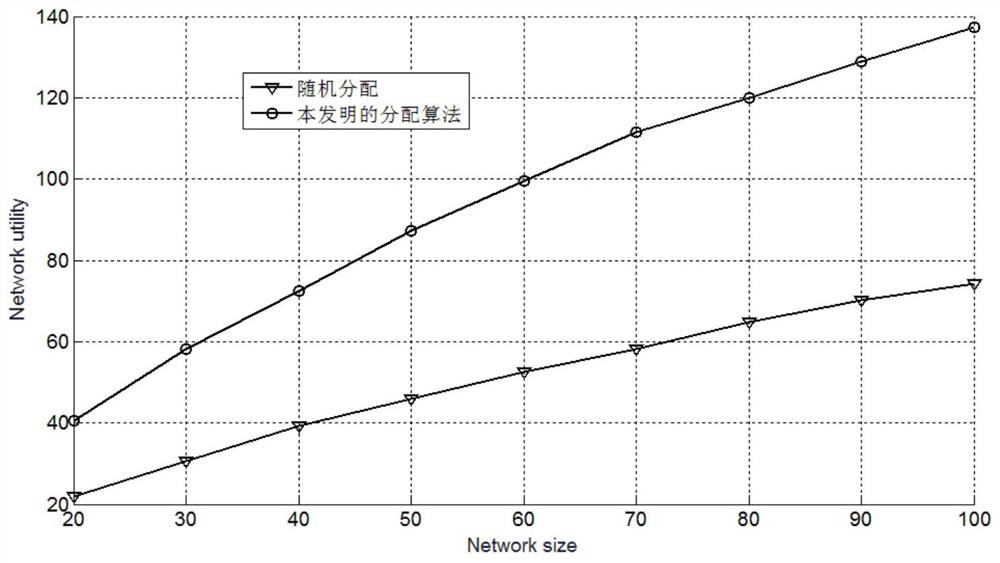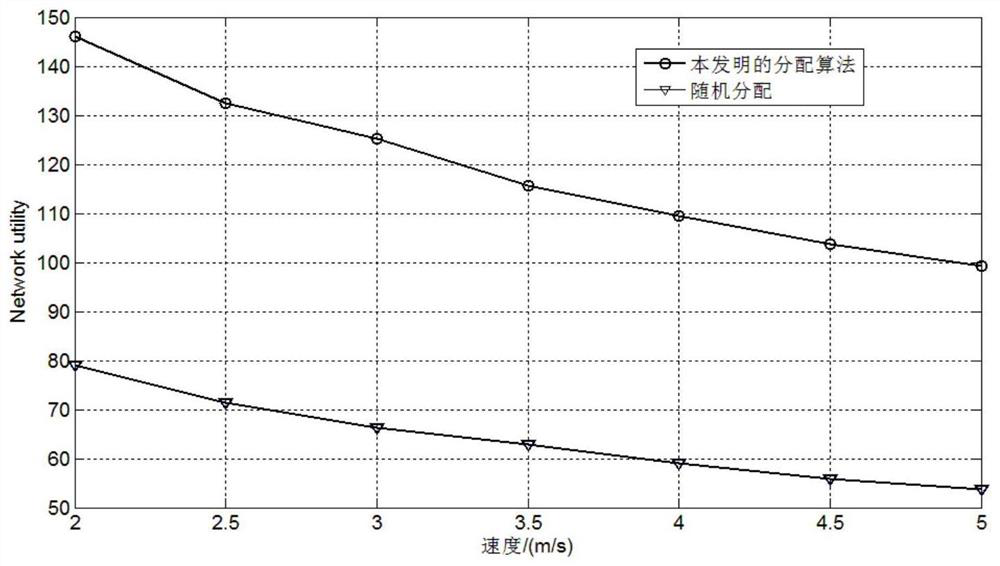A data collection method for wireless sensor networks based on tunnel environment
A wireless sensor and tunnel environment technology, applied in the field of communication, can solve problems such as consumption, achieve the effect of improving the quality of data collection, maximizing the total utility of the network, and reducing energy consumption
- Summary
- Abstract
- Description
- Claims
- Application Information
AI Technical Summary
Problems solved by technology
Method used
Image
Examples
Embodiment Construction
[0054] The present invention will be further described in detail below in conjunction with the embodiments and the accompanying drawings, but the embodiments of the present invention are not limited thereto.
[0055] Such as figure 1 As shown, the system model based on the tunnel wireless sensor network includes a mobile car and several sensor nodes deployed in the tunnel environment to collect tunnel environment data. The car has the function of transmitting carrier signal and receiving data at the same time. In the model, the trolley passes through the sensor network periodically and at a constant speed along the track (dashed line AB in the figure) at a speed v to collect data sensed by sensor nodes in the area, and the track AB is long L.
[0056] Said method comprises the following steps:
[0057] Step 1: Use the discretization method to divide T into |T| equal time slots, and obtain a set of continuous time slots in which each sensor node can communicate with the car. ...
PUM
 Login to View More
Login to View More Abstract
Description
Claims
Application Information
 Login to View More
Login to View More - R&D
- Intellectual Property
- Life Sciences
- Materials
- Tech Scout
- Unparalleled Data Quality
- Higher Quality Content
- 60% Fewer Hallucinations
Browse by: Latest US Patents, China's latest patents, Technical Efficacy Thesaurus, Application Domain, Technology Topic, Popular Technical Reports.
© 2025 PatSnap. All rights reserved.Legal|Privacy policy|Modern Slavery Act Transparency Statement|Sitemap|About US| Contact US: help@patsnap.com



